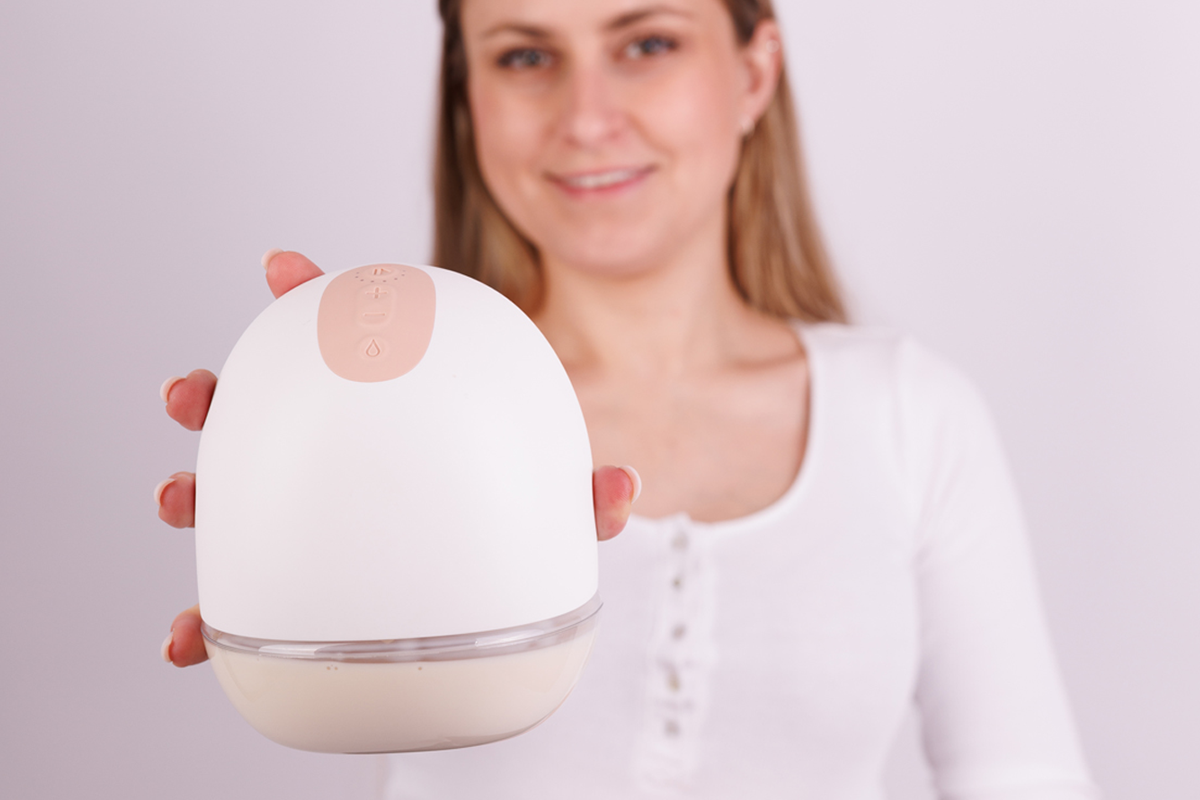When it comes to breastfeeding, many mothers notice that one breast produces more milk than the other, leading them to wonder if this is normal and what causes this imbalance. It’s quite common for one breast to produce more milk, and it usually does not indicate any problem. This article will explain why one breast makes more milk than the other, what causes less milk production in one breast, and practical tips on how to increase milk supply in one breast.
Is it normal for one breast to produce less milk?
Yes, it is completely normal for one breast to make less milk than the other. Natural differences in milk production between breasts occur in many breastfeeding mothers. This asymmetry often balances out over time, but in some cases, it can persist. Occasionally, one breast may produce significantly more milk, which can raise concerns about whether this affects your overall supply or your baby's nutrition.
What causes milk production imbalance between breasts?
Several factors can contribute to one breast producing less milk. Understanding these causes can help you address the issue effectively:
- Baby favoring one side: Babies may prefer nursing on one breast due to comfort, ease of latch, or habit, which encourages more milk production on that side.
- Different breast anatomy: Natural differences in glandular tissue and breast size can lead to uneven milk supply, though breast size doesn’t always correlate with milk production.
- Nipple shape/suction effectiveness: Differences in nipple shape or how well the baby can latch and create suction affect milk removal.
- Previous injury or surgery: Any trauma, surgery, or scarring to the breast or chest wall can impact milk-producing glands.
- Blocked Ducts/Mastitis: While not a permanent cause of imbalance, recurrent issues on one side could temporarily reduce supply and contribute to an ongoing imbalance if not addressed promptly. This is a common concern for new mothers.
- Inefficient latch on one side: A poor latch reduces milk removal, which signals less milk production.
- Pumping inconsistently on both breasts : Using a pump irregularly or with incorrect flange size may lead to less milk extraction on one side, especially if no milk comes out when pumping on that side.
In most cases, addressing the underlying cause—whether it's related to baby's latch, breast anatomy, or pumping habits—can help improve milk production in the less productive breast over time.
Will one-sided breastfeeding affect milk supply long term?
Feeding primarily from one breast can cause long-term supply differences because milk production is largely driven by demand. Here’s how:
- Supply and Demand: Breast milk production works on a supply and demand basis. The more a breast is stimulated (by nursing or pumping), the more milk it will produce. If one breast is consistently nursed less frequently or efficiently, it will receive less stimulation, and its milk supply will naturally decrease over time. Conversely, the breast that is used more will increase its supply to meet the baby's demand.
-
Lopsidedness: This difference in milk production can lead to a noticeable difference in breast size, with the more frequently nursed breast appearing larger and fuller. This asymmetry is usually temporary and resolves after weaning.
Potential challenges:
- Engorgement: The less-used breast can become engorged, which can be uncomfortable and potentially lead to plugged ducts or mastitis if not managed.
- Baby's preference: Babies often develop a preference for one breast due to factors like milk flow (faster or slower let-down), nipple shape, or even physical comfort for the baby. This preference can perpetuate one-sided feeding.
-
Maternal discomfort: A mother might also prefer one side due to comfort or a better latch.
💡 Consistently nursing or pumping more on the fuller breast can make the less-used breast produce even less milk. However, with proper management, you can stimulate the lower-producing breast and encourage balanced supply.
How to increase milk supply in one breast
It's common for one breast to produce more milk than the other, and it's often referred to as having a "slacker boob." This asymmetry is usually normal, and your body can still produce enough milk overall for your baby. However, if you want to increase milk supply in one specific breast, here's how you can encourage it:
- Encourage the baby to nurse on the slacker side first: Offer the breast with lower supply at the start of feedings when the baby is most hungry.
- Use heat and massage: Applying warmth and massaging the breast before and during feeding or pumping improves milk flow.
- Pump more frequently on the lower-producing side: Use a breast pump or hand expression to stimulate supply. Consider power pumping to mimic cluster feeding and boost milk production. The Perifit Pump offers a built-in power pumping program and provides hospital-grade efficiency to help stimulate milk supply
- Check latch or positioning: Ensure the baby has an effective latch on the lower-producing side by consulting a lactation professional if needed.
- Use breast compression: Squeezing the breast during nursing helps empty it more effectively, encouraging more production.
-
Stay hydrated and nourished: Adequate fluids and balanced nutrition are essential to maintaining good milk supply.
A lactation consultant can help identify the underlying cause of the uneven supply and provide personalized strategies to address it.
Tips for managing uneven milk supply
While uneven milk production is usually not harmful, there are several strategies you can use to help support a more balanced supply between both breasts—especially if the difference is affecting your comfort or your baby’s feeding patterns:
- Rotate breastfeeding starting sides to give both breasts equal opportunity to produce milk.
- Monitor baby’s weight gain and wet diapers to ensure sufficient intake despite uneven supply.
- Use correct flange sizes during pumping to maximize milk removal.
-
Avoid stressing about differences—milk supply can fluctuate naturally.
By incorporating these simple habits into your breastfeeding routine, you can support both breasts in producing milk more effectively, and ensure your baby continues to receive the nutrition they need.
What if your baby prefers one breast over the other?
Babies may prefer one breast due to comfort, easier latch, or flow differences. To encourage use of the less-favored breast:
-
Offer the less-preferred side first at feedings.
-
Nurse in a quiet environment with minimal distractions.
-
Try different breastfeeding positions to improve comfort and latch.
- Be patient; preferences can change over time.
With gentle encouragement and consistent practice, many babies eventually accept both breasts, helping to promote a more even milk supply over time.
Can a baby get enough milk from one breast?
Yes, it is absolutely possible for a baby to be fully breastfed from just one breast. Many mothers successfully nurse their babies exclusively from one side, especially if that one breast has a good milk-making capacity and the baby is allowed to feed on demand.
Noticing that one breast produces more milk than the other can feel confusing or even frustrating, but rest assured — it’s a common experience shared by many breastfeeding parents. Whether the cause is related to latch issues, breast anatomy, or your baby’s feeding preferences, this imbalance is usually manageable and does not harm your baby’s nutrition if addressed thoughtfully. Understanding why one breast makes more milk than the other is the first step in promoting balanced milk production and ensuring your breastfeeding journey remains smooth and rewarding. With patience, supportive techniques, and, if needed, help from a lactation consultant, you can encourage better milk output from the lower-producing side while maintaining your baby’s feeding needs.
Sources :





